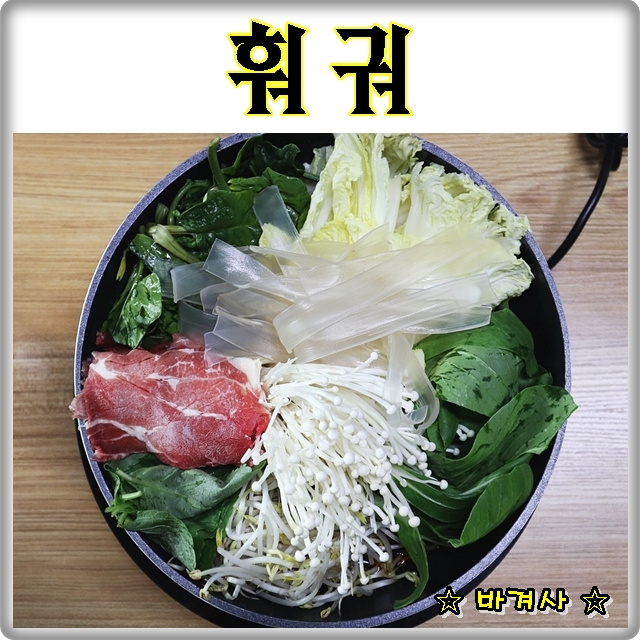Homemade Hot Pot (Huo Guo) Feast
Mastering Chinese Hot Pot at Home: A Detailed Guide

Craving delicious hot pot but hesitant to dine out? Bring the authentic experience right into your kitchen! This guide will show you how to create a flavorful and satisfying Chinese hot pot, perfect for a cozy meal at home. We’ll utilize fresh vegetables and your favorite ingredients to craft a customizable and comforting dish. Get ready to enjoy the delightful process of simmering fresh ingredients in a rich broth!
Hot Pot Ingredients- Qing You Sauce (Hot Pot Broth Base)
- Zhi Ma Jiang (Sesame Paste Sauce)
- Dried Tofu Sheets
- Chinese Glass Noodles
- Homemade Meatballs
- Beef (for Shabu-Shabu or Bulgogi)
- Napa Cabbage
- Bok Choy
- Perilla Leaves
- Spinach (Seomcho)
- Bean Sprouts
- Enoki Mushrooms
- Water
Cooking Instructions
Step 1
First, prepare your vegetables for the hot pot. It’s a great opportunity to use up any leftover vegetables in your fridge! Trim the base of the enoki mushrooms and cut the napa cabbage into bite-sized pieces. Wash the bok choy thoroughly. Keep the perilla leaves fresh. Include seasonal spinach (Seomcho) and crisp bean sprouts for a vibrant mix. Six types of diverse vegetables will make the broth flavorful and nutritious.

Step 2
Chinese glass noodles offer a wonderfully chewy texture. To prevent them from becoming too soft or breaking apart when added directly to boiling broth, soak them in warm water for at least 30 minutes beforehand. This step ensures they cook perfectly and retain their delightful chewiness.

Step 3
Now, let’s create the heart of the hot pot: the broth. Pour water into a pot and dissolve the Qing You Sauce. It’s best to start with half of the sauce, taste the broth, and then gradually add more until it reaches your desired flavor and saltiness. Feel free to adjust with other seasonings like chili oil or spices to suit your preference.

Step 4
You can use thinly sliced beef specifically for shabu-shabu, but I opted for thinly sliced bulgogi-style beef. This is versatile as it cooks quickly in the hot pot, and any leftovers can be used for other dishes. Ensure you have fresh, good-quality beef.

Step 5
For a visually appealing presentation, I’ve added a generous amount of vegetables and meat to the pot. In a real meal, you might prefer to add ingredients gradually as you eat to maintain their freshness and texture. However, presentation adds to the enjoyment!

Step 6
Elevate your hot pot experience with a homemade Zhi Ma Jiang (sesame paste) sauce! I discovered this delightful dip later, but it’s incredibly simple to make. Mix Zhi Ma Jiang and a touch of cider (or a simple syrup) in a 2:1 ratio for a rich, nutty, and slightly sweet dipping sauce. It’s fantastic for dipping your cooked ingredients! My pot is so full, you can barely see the broth underneath.

Step 7
Dried tofu sheets add a pleasant texture and absorb the flavorful broth beautifully. Cut them into manageable pieces and add them to the pot. Homemade meatballs are another delicious addition. Instead of pre-cooking them, simply squeeze small portions directly into the simmering broth; they’ll cook through and enrich the soup.

Step 8
Once the broth is at a rolling boil, stir in 2 tablespoons of Zhi Ma Jiang. This will add a wonderful nutty depth to the broth. If you don’t have Zhi Ma Jiang, you can create a similar flavor profile by mixing peanut butter with soy sauce and sesame oil.

Step 9
The final step is to enjoy! As soon as the beef is cooked through and no longer pink, remove it from the pot to prevent it from becoming tough. Dip the tender beef and fresh vegetables into your chosen sauce and savor the delicious flavors. A hot pot meal is the perfect way to warm up on a chilly day!



